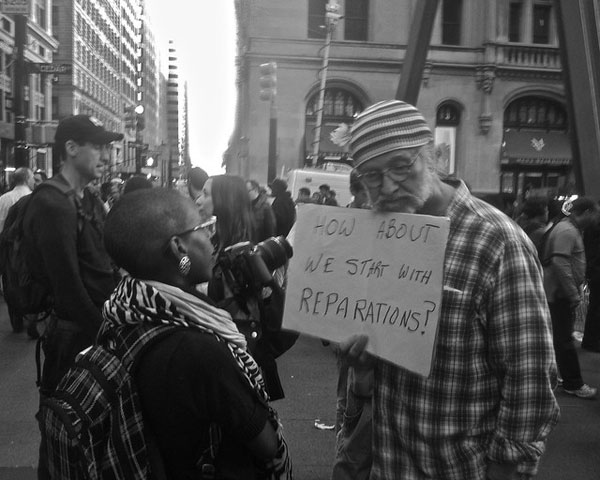
May 10, 2019; New York Times, “The Upshot”
An article by Emily Badger in the New York Times looks at the political landscape and suggests that those wanting to eliminate the financial repercussions of structural racism may wish to express their arguments through more race-neutral terms and policies or risk having them struck down as discriminatory in a majority conservative Supreme Court.
It shouldn’t be a matter of debate that the black community as a whole has accumulated less wealth than its white counterpart. As was recently discussed in the New York Times, “Research shows that black people with higher-paying jobs still hold less wealth than white people with lower incomes, who may benefit from generations of accumulated wealth. Even black people with college degrees are likely to have less wealth than white people who didn’t complete high school.” Nor is there reason to question that this is the result of slavery, public policies like real-estate redlining, and other forms of discrimination.
The importance of changing this economic reality was addressed by Darrick Hamilton, director of the Kirwan Institute for the Study of Race and Ethnicity at Ohio State University, in comments captured by the Times. “Ultimately,” he said, “assets give people agency in their lives…the ability to make decisions [and] to have choice and have freedom and self-determination.”
The most direct approaches to repairing the harm done by past wrongs, like reparations and racially targeted aid programs, could fix the inequity. But such proposals are unlikely to survive challenges in front of the Supreme Court.
Sign up for our free newsletters
Subscribe to NPQ's newsletters to have our top stories delivered directly to your inbox.
By signing up, you agree to our privacy policy and terms of use, and to receive messages from NPQ and our partners.
The court is unlikely to uphold baby bonds or housing programs explicitly for African Americans, even to remedy disparities created when many government benefits were explicitly for whites. Affirmative action and government contracting programs have similarly struggled to meet or skirt the court’s strict scrutiny for applying benefits by race.
Some policy experts see a solution in redrafting public programs and policies like the mortgage interest deduction and the interstate highway system to benefit communities of color, rather than the white community that has reaped rewards from ostensibly “race-neutral” efforts. Because of the correlation of wealth and race, scaling benefits based on financial status is seen as a way to overcome the political hurdles standing in the face of equity. As an example, Elizabeth Warren has proposed using the old federal maps that redlined communities of color as boundaries for a new Federal Housing Assistance program designed to spur the wealth building potential of home ownership in black communities. And New Jersey Senator Cory Booker is proposing providing a “$1,000 government savings fund to every newborn in America, for use later in adulthood.”
The government would seed more money into that fund each year according to a family’s income, giving the most to children in the poorest families. That money could then be spent in adulthood on education, buying a home, or starting a business.
But critics believe this approach will have only a limited impact without directly taking on the legacy of our racial history. William Darity, a professor at Duke who has also worked on the baby bonds proposal, observes that the proposals being considered “close the racial wealth gap only so much.”
“Today, African Americans make up about 13 percent of the population, but hold only 2.6 percent of the country’s wealth,” Darity says. “Ultimately, you need a person-based program if you’re really concerned about the racial wealth gap. And it not only has to be person-based, but it has to be race-specific.’”—Martin Levine













